Challenging the Classics: Questioning the Immutable Hallmarks of Genre
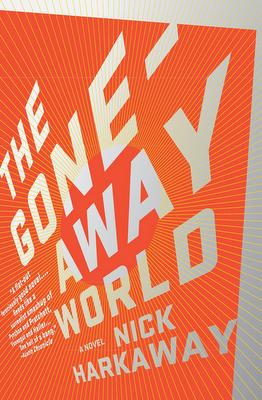 Every once in a while, usually in the midst of conversations about the history of SFF or arguments about its greatest works and writers, I’ll guiltily remember how few of the Classics I’ve read, and make rash promises to remedy the situation.
Every once in a while, usually in the midst of conversations about the history of SFF or arguments about its greatest works and writers, I’ll guiltily remember how few of the Classics I’ve read, and make rash promises to remedy the situation.
I know Orson Scott Card is a raving homophobe, I’ll think to myself, but I really should read Ender’s Game. In a fit of mad optimism, I’ll add various works by Isaac Asimov and William Gibson to my Amazon wishlist, only to delete them the next time I’ve got money to spend, because I just can’t muster up the interest. Friends have lent me copies of Jack Vance, Vernor Vinge, and Gene Wolfe, and each time, despite my best intentions, the books are left to molder by the bedside in favor of something by Catherynne M. Valente or Nnedi Okorafor.
It’s not like I have any moral objection to books by straight white male writers – after all, I’ve been compulsively reading and rereading both Discworld and A Song of Ice and Fire for over a decade, I’m an absolute sucker for China Mieville and Nick Harkaway’s The Gone-Away World will forever be one of my all-time favorite novels (and that’s just for starters).
But with the genre developing in so many different directions at once, it feels needlessly regressive to pry myself away from the latest book by Elizabeth Bear or N. K. Jemisin and instead try to read, out of duty rather than passion, some decades-old novel that’s already been analysed, reviewed, and criticised ad nauseum.
Which doesn’t make them bad novels, or mean that there’s anything wrong with loving, critiquing, discovering and talking about them now. They’re just not for me, is all, and most of the time, I can live with that. But then I’ll read yet another article complaining about newcomers to SFF reinventing the wheel for lack of familiarity with the Classics, or hear someone bemoaning the fact that fantasy Isn’t What It Used To Be, and part of me starts to doubt my own credentials. Can I really call myself a fan of science fiction if I’ve never read Dune? If I let slip that I never made it past book one of The Wheel of Time, are the Geek Police going to come along and revoke my right to talk about epic fantasy on the Internet?
If I’ve never read the Classics, then how did I get into SFF in the first place?
[Click on any of the images in this article for bigger versions.]
That last question is one I really have been asked – sometimes overtly, and sometimes only by implication, but always in a tone of genuine surprise, and always by men, as though my interlocutor couldn’t conceive of a journey into SFF fandom that didn’t involve neatly-spaced stopovers at Herbert, Lem, Dick, Matheson, Eddings, Feist, and Goodkind, preferably in that order.
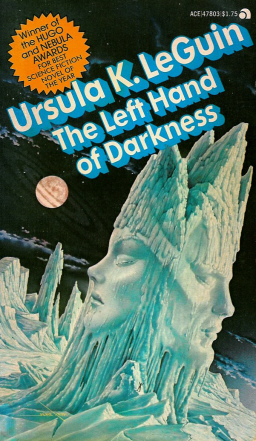 By the same token, it’s also a question that tends to be linked to a lot of anxiety about SFF being forced away from its roots, and whether or not this constitutes progress or perversion. In some respects, this is an understandable question: whatever the genre, the stories that first draw us in are often the ones for which we feel the greatest personal affinity, and which, as a consequence, we not only want to emulate, but whose tropes and themes (we believe) aren’t just common to the genre, but actively necessary to it.
By the same token, it’s also a question that tends to be linked to a lot of anxiety about SFF being forced away from its roots, and whether or not this constitutes progress or perversion. In some respects, this is an understandable question: whatever the genre, the stories that first draw us in are often the ones for which we feel the greatest personal affinity, and which, as a consequence, we not only want to emulate, but whose tropes and themes (we believe) aren’t just common to the genre, but actively necessary to it.
With the rise of book blogging and online resources like Goodreads and TV Tropes, it doesn’t seem unreasonable to say that fandom is currently enjoying an unprecedented level of trope literacy among its members, and that this in turn has lead to an appetite for trope subversion. Small wonder, then, that there’s been a parallel rise in effort to establish what the immutable hallmarks of genre actually are, by way of insisting that among all this change and development, some themes and stories surely must remain sacred.
In a genre whose infinite possibilities should surely be open to more permutations of culture and reality than just our unconscious defaults, it’s my belief that the need to challenge problematic mainstays while exploring diverse perspectives is the more important consideration; even so, it’s important to acknowledge the value of what’s come before and not to throw the baby out with the bathwater.
But here’s the thing: when people talk about the emphasis on diversity in SFF as being a new thing – a product predominantly of the last half-decade, its niche concerns magnified by blogging and social media in a way that wasn’t previously possible – they miss the fact that these conversations have been going on for much, much longer than that.
To pick two prominent examples, the inaugural WisCon was held in 1977, while both Octavia E. Butler and Ursula le Guin were publishing and winning awards in the sixties. Which means that, as prominent and vaunted as the (predominantly straight, white, male) Classics are, they’re not the only ones out there.
For every conservative fan who thinks of women, POC (people of color) and QUILTBAG (queer, intersex, lesbian, transgender, bisexual, asexual and gay) persons as being newcomers to fandom, the fact is that it’s been possible for a while now – not necessarily easy, but possible nonetheless – to have a solid grounding in geekery that isn’t focused on, or even dominated by, SWM Classics.
Which isn’t to say there aren’t still massive, exclusionary barriers in place, not only in terms of popular content, but with regard to media representation, white- and straightwashing, promotional budgets, and attitudes within fandom itself. It’s just that, with the recent panic over Fake Geek Girls still fresh in our collective memories, it seems important to explain things from a different perspective – to set out, not just how I discovered SFF without reference to the Classics, but how similar experiences are steadily becoming more and more common.
There are many roads to fandom, and they all begin somewhere different.
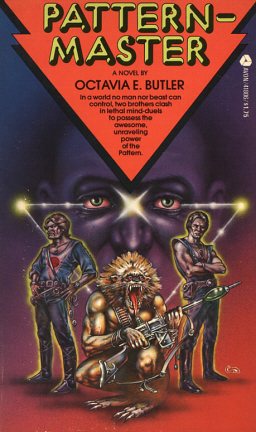
Whether through Narnian portals to other worlds or the presence of talking animals in this one, children’s stories are full of magic. Collectively, we’re raised on fairy tales, and particularly with the modern abundance of kids’ films, TV shows, comics, video games, and chapter books all making use of SFFnal themes, it’s a rare person born after 1980 who hasn’t, at some point in their lives, dipped so much as a toe in the fantastic.
I could write an entire essay about the various magical, girl-oriented cartoons that were ubiquitous from the late eighties onwards – Sailor Moon, Lady Lovely Locks, She-Ra: Princess of Power, My Little Pony, Care Bears, Princess Gwenevere and the Jewel Riders – and how, just like the more obviously masculine shows of the same era, they acted as gateways to SFF for multiple generations of viewers. (I could also write another, very different essay about how, with the exception of Sailor Moon and, more recently, My Little Pony, mainstream fandom tends not to acknowledge such shows as being truly SFFnal on the grounds of being too overtly feminine. Watching Transformers gets you geek cred, but Strawberry Shortcake? Not so much.)
But as popular as such heavily gendered offerings were, there were other cartoons that transcended the obvious binary. The Mysterious Cities of Gold was one such show, a French-Japanese hybrid that first aired in the early 1980s.
Set in the 1600s, the story follows Esteban, a Spanish orphan, on his quest to find the legendary Cities of Gold in the newly-discovered Americas, on which quest he is accompanied by Zia, a captured Incan girl, and Tao, a surviving descendant of the lost continent of Mu. Apart from being a well-written, well-characterized and well-plotted series, Mysterious Cities is notable in that all three leads are people of color.
Though not on my radar until the start of university, Mysterious Cities exists alongside another French-Japanese animation, this one from the early nineties, called The Twins of Destiny – a show which aired in Australia on the ABC in 1995, and which quickly became a mainstay of my nine-year-old imaginings. Set in Europe and China in the 1800s, the titular Twins are Jules and Julie, a Chinese boy and a white girl who wield powerful magic whenever they join hands, and whose ultimate goal is to rescue their captive fathers from the vengeful Empress of China.
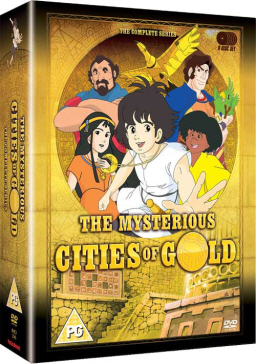 Though problematic in some respects, The Twins of Destiny didn’t shrink from portraying the twins as being on the receiving end of both racism and sexism, and in its explicit description of Julie as a white girl, rather than just a girl, became the first story I ever encountered that suggested whiteness wasn’t an implied default.
Though problematic in some respects, The Twins of Destiny didn’t shrink from portraying the twins as being on the receiving end of both racism and sexism, and in its explicit description of Julie as a white girl, rather than just a girl, became the first story I ever encountered that suggested whiteness wasn’t an implied default.
As much as I loved The Twins of Destiny, however, the cartoon that had the biggest impact on my developing passion for SFF was The Flight of Dragons, an animated movie first released in 1982.
Featuring a female warrior who died and came back to life, a princess who gave up her crown to live in the modern world, a fantasy realm whose inhabitants weren’t exclusively white, lots and lots of dragons, and a climactic battle that hinged on the awesomeness of scientific knowledge, The Flight of Dragons was the film that convinced me magical narratives were worth investing in.
And once I’d had that epiphany, I found that there were plenty of stories to cater to my interest, with films like The Neverending Story, The Last Unicorn, Labyrinth and The Dark Crystal all readily available – and, just as importantly, girl-friendly, being neither overtly gendered nor exclusionary.
These were my childhood classics, the stories that first made me feel invested in SFF – as did my love of mythology. From age seven onwards, I read every book of myths I could get my hands on, starting with Greek, Roman, and Norse stories, but quickly expanding into Egyptian, African, Australian Aboriginal, Maori, Native American, Chinese, Japanese, West Indian, Middle Eastern, and every other part of the world whose legends I could find.
By the age of eleven, I knew that the Cinderella story wasn’t a European construction, but echoed stories told in China, certain Native American traditions, and even ancient Egypt. I was as well-versed in the Arabian Nights as I was in the Brothers Grimm, and made a point of collecting mythological anthologies with stories from around the world, so that I was always guaranteed to find something new.
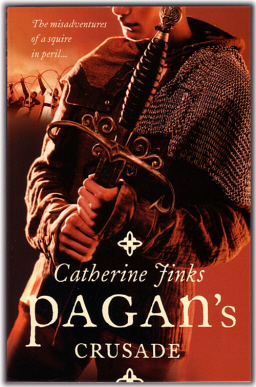 As a result of all this, my middle-grade reading tastes began to skew heavily towards SFF. In addition to being hooked on staple fantasies by the likes of Roald Dahl, Garth Nix, and Tamora Pierce (Brian Jacques’s epic Redwall saga, a series with as varied and well-developed a range of female characters as exists anywhere, was a particular favorite), I was enamored of the works of several Australian writers, many of whom, despite their considerable talents, are largely unknown elsewhere.
As a result of all this, my middle-grade reading tastes began to skew heavily towards SFF. In addition to being hooked on staple fantasies by the likes of Roald Dahl, Garth Nix, and Tamora Pierce (Brian Jacques’s epic Redwall saga, a series with as varied and well-developed a range of female characters as exists anywhere, was a particular favorite), I was enamored of the works of several Australian writers, many of whom, despite their considerable talents, are largely unknown elsewhere.
One of the more prominent was Geoffrey McSkimming: though riddled with problematic elements I never noticed as a child, but which stand out to me as an adult, his Cairo Jim and Jocelyn Osgood archaeology-oriented adventures took me all over the world, providing both a diverse cast of characters (if sometimes marred by stereotype), a female macaw who loved Shakespeare as much as I did, and, in the form of Jocelyn, my first introduction to feminism – she was a flight attendant with her own pilot’s license, though the airline she worked for refused to employ female pilots.
By contrast with McSkimming’s playful, tongue-in-cheek style, Catherine Jinks’s Pagan novels, though written with humor, were grounded firmly in real-world history. The eponymous hero, Pagan Kidrouk, is a young Arab boy working with the Knights Templar as squire and aid to Sir Roland de Bram.
As well as containing positive depictions of both Muslim and heretical Christian characters, the stories also touched on homosexuality, racism, sexism, classism and, most poignantly in Pagan’s Vows, child abuse within the church.
In addition to the Pagan series, Jinks also wrote some of the first SF novels I ever read, including Piggy in the Middle, which featured yet more positive depictions of both Middle Eastern characters and plus-sized women while discussing the ethical implications of informed consent in genetic research.
 Brian Caswell’s writing was similarly deft, such that his Merryll of the Stones, a time-travelling portal fantasy about Welsh history with a compelling female protagonist, nonetheless managed to deal with modern-day issues like bullying and racism, while Victor Kelleher was known for writing protagonists who bucked the norm: many were openly unlikeable, some were disabled in stories where their disability wasn’t the primary focus, and others suffered from mental illness (Del-Del, a suspenseful thriller with SF elements, was one of his best such works).
Brian Caswell’s writing was similarly deft, such that his Merryll of the Stones, a time-travelling portal fantasy about Welsh history with a compelling female protagonist, nonetheless managed to deal with modern-day issues like bullying and racism, while Victor Kelleher was known for writing protagonists who bucked the norm: many were openly unlikeable, some were disabled in stories where their disability wasn’t the primary focus, and others suffered from mental illness (Del-Del, a suspenseful thriller with SF elements, was one of his best such works).
And then there were the works of Jackie French. In addition to writing the Outland trilogy, a series of SFnal urban fantasy murder mysteries whose first installment, In the Blood, was published a good five years before the current trend kicked off, she also penned one of my favorite SFF novels of all time, the lamentably out of print Tajore Arkle, an outsider narrative where the humans inhabiting a distant, desert planet have forgotten not only the technology that brought them there from Earth, but Earth itself.
Only a handful of people, called Pastseers, remember: individuals born with the reincarnated memories of their ancestors, who spend their days on the Mountain, trying to recover the science that humanity has lost. The story follows the efforts of Anya and her fellow Pastseer, Ib, to find the unknown girl who keeps appearing in Anya’s unprecedented visions of the present.
Treading the line between fantasy and science fiction, Tajore Arkle stands out in memory, not only as a wonderful story, but as one of the first novels I ever read with a predominantly POC cast in a narrative that had nothing to do with race (and which, coincidentally, features two characters of color on the cover illustration).
Australian SFF might not be universally familiar, but that doesn’t mean it lacks for substance – and even though I was still reading more traditional fare, like The Hobbit and The Hitchhiker’s Guide to the Galaxy (after falling in love with the radio series, of course), my overall experience was remarkably diverse. So when I started transitioning to adult SFF, it’s hardly surprising that my expectations and tastes, however subconsciously, were geared away from the idea of straight white male defaults.
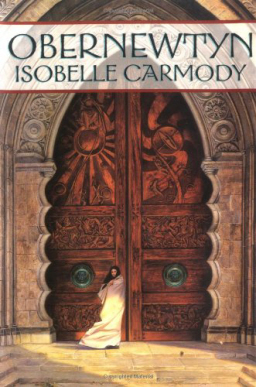 By way of easing the transition between YA and adult works, I started with Isobelle Carmody, first borrowing from my high school library, then seeking out new releases for purchase – Obernewtyn, Darkfall, Scatterlings, Green Monkey Dreams, Billy Thunder and the Night Gate. As well as being racially diverse, her stories have a particular emphasis on mental illness, grief, and emotional autonomy that always appealed to me.
By way of easing the transition between YA and adult works, I started with Isobelle Carmody, first borrowing from my high school library, then seeking out new releases for purchase – Obernewtyn, Darkfall, Scatterlings, Green Monkey Dreams, Billy Thunder and the Night Gate. As well as being racially diverse, her stories have a particular emphasis on mental illness, grief, and emotional autonomy that always appealed to me.
I read Philip Pullman’s The Northern Lights and The Subtle Knife, then waited what felt like an age for the release of The Amber Spyglass, adoring Lyra Belaqua and Iorek Byrnison every bit as much as my fledgling atheist sensibilities loved the overt deconstruction of church dogma and C. S. Lewis (though I still liked Narnia, of course; The Horse and His Boy and The Voyage of the Dawn Treader were then and still remain old favorites).
And then I discovered Sara Douglass. Her Axis trilogy, followed by its companion series, The Wayfarer Redemption, were the first true adult fantasies I ever read, and I loved them uncritically and with passion.
In hindsight, of course, they were problematic and melodramatic as hell, but I loved them, reading and rereading them multiple times each year of high school and buying everything else of hers I could lay my hands on, notably Beyond the Hanging Wall, Threshold, and her Troy Game quartet.
I also tried her Crucible novels – another trilogy set during the late Middle Ages – but couldn’t get past the rape and degradation that filled them; I’d experienced similar qualms about both the Troy Game novels and Threshold, but felt too invested in the respective narratives to quit.
I loved Douglass because she wrote big; the endless melodrama appealed to my teenage sensibilities, and even though her magical elements were far from original (and sometimes, in the case of the one-eyed sentient pyramids and magical, water-bringing frogs of Threshold, verging on the ridiculous), at the time, they were unlike anything I’d read before.
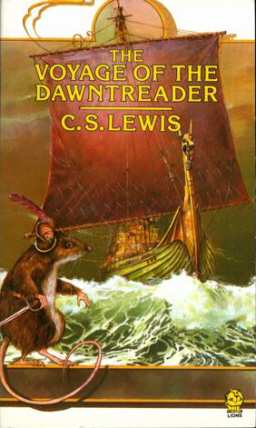 But despite everything they did wrong, in the eyes of my younger, uncritical self, her books still fit within the spectrum of what I expected from fantasy. There was an emphasis on female agency and female characters; her worlds were racially diverse (though often in problematic ways); and though there was a disturbing amount of sexual violence, particularly in her later novels, it was often directed at men as well as women, which still seems to be something of a rarity in the genre.
But despite everything they did wrong, in the eyes of my younger, uncritical self, her books still fit within the spectrum of what I expected from fantasy. There was an emphasis on female agency and female characters; her worlds were racially diverse (though often in problematic ways); and though there was a disturbing amount of sexual violence, particularly in her later novels, it was often directed at men as well as women, which still seems to be something of a rarity in the genre.
Around the same time, I was given a copy of Anne McCaffrey’s short story collection, The Girl Who Heard Dragons, and had a similarly enthusiastic reaction. Again, however uncritically I loved her as a teenager, her stories were problematic in ways that my older self now finds obvious. Not only her Pern novels, but the majority of her other series were racially homogeneous, tending only to feature POC as either bit-players or, more commonly, downtrodden masses, as per the child laborers in the first Acorna novel and the poor slumdwellers in Pegasus in Flight.
But at the same time, her Pern stories also served as my introduction to both homosexuality and asexuality in SFF: though the former was only ever a background element pertaining to the male riders of green dragons, the latter was made a central plotpoint in The White Dragon (albeit with regard to a dragon character rather than a human one).
And even though Pern was written as a patriarchal society, the way women’s roles were developed regardless – as queenriders, noblewomen, freeholders, message runners, and musicians – always had a strong feminist bent. I lingered in particular over the stories about Menolly, the fire-lizard girl, and her ongoing battle against the sexist assumptions of both her own family and her peers at the Harper’s Hall.
Whatever their respective problems, with Douglass and McCaffrey as starting points, it wasn’t long before I was branching out even further – and most of the authors I found were female. In addition to Kate Elliott, Katharine Kerr, and Robin Hobb, who were quickly established as my lynchpin, must-have favorites, I filled my shelves with Maggie Furey, Melanie Rawn, J. K. Rowling, Traci Harding, Lynn Flewelling, Kate Forsyth, and Patricia C. Wrede.
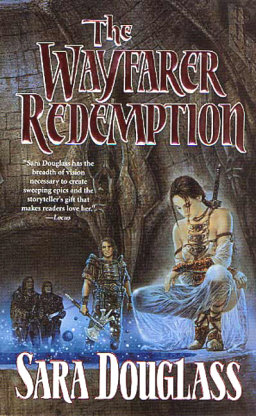 At the urging of my male geek friends, I also tried Terry Pratchett, George R. R. Martin, and Neil Gaiman, whose work I loved, and David Eddings, Raymond E. Feist, Robert Jordan, and Terry Goodkind, of whom I was not so fond. (A female friend also lent me Dune, but I never got around to it, and eventually returned her copy unread.)
At the urging of my male geek friends, I also tried Terry Pratchett, George R. R. Martin, and Neil Gaiman, whose work I loved, and David Eddings, Raymond E. Feist, Robert Jordan, and Terry Goodkind, of whom I was not so fond. (A female friend also lent me Dune, but I never got around to it, and eventually returned her copy unread.)
And even though it was years into university before I ever self-identified as a feminist, and longer still before I began chipping away at all the internalized misogyny and racism I’d picked up as a byproduct of being a privileged white girl who’d never properly thought about oppression beyond declaring it bad, even then, I still instinctively drifted away from SFFnal stories that restricted the agency of the female characters, presented highly stereotyped portrayals of women – and sometimes, though shamefully not always, POC – or which, like those disquieting Douglass stories, were heavy on the rape and female sexualization.
But for all that, I wasn’t an adventurous reader. Having thus found a handful of authors whose stories worked for me, I stuck with them, reading and rereading my personal Classic Canon over and over again – and with so many books per series, per author, it was surprisingly easy to do so without the practice feeling repetitive. It wasn’t until the very tail end of 2008, when a high school friend asked me to recommend him some new series to read, that I realized how little my reading material had changed since high school.
Alarmed by how stagnant my tastes had become, I vowed to only read new books in 2009, and with a single exception, it was a promise I managed to keep. Since then, I’ve made a concerted effort to be a critical, wide-ranging reader, maintaining yearly records of the books I’ve read in order to keep tabs on myself, and slowly but surely, as more and more authors have crept onto my radar, my choices are starting to diversify again.
Which, at long last, serves as answer to the original question. How did I get into SFF if I never read the Classics?
Because they’re not the be-all, end-all of the genre, and at least in my case, there have always been so many other options to choose from than it’s never been a pressing issue. Only since coming to participate in fandom, in fact, have I felt – or rather, been made to feel – as though this might be a failing; as though everything else I’ve read, watched, and loved is somehow inadequate if I’m going to participate fully in SFF.
But even if my experience was anomalous for my generation (and I’m not convinced it was), for everyone born subsequently, the range of narratives on offer, not just in terms of novels, but cartoons, video games, films, and comics, is only getting broader.
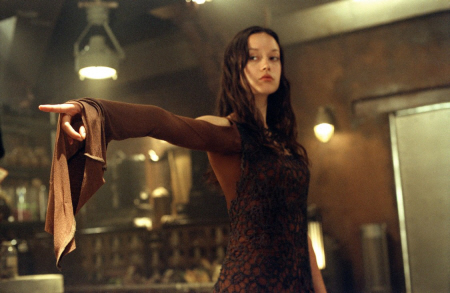
In addition to all the female characters populating my favorite books, I grew up with Xena and Buffy Summers, Motoko Kusanagi and Sailor Moon, She-Ra and Daria Morgandorffer, B’elanna Torres and Captain Janeway, Zoe Washburn and River Tam. And not only are all their respective shows still readily accessible to newer viewers, but more have come along since then, and will continue to do so well into the future.
All that being said, whatever diversity existed in the casts of the stories I grew up reading, the diversity in authorship was much less so. To the best of my knowledge, all the creators I’ve listed above are both white and straight, and if not for an interest in anime and mythology, it seems doubtful that my youthful passions would have contained much, if any, content created by POC.
To borrow the same example I used earlier, despite her incredible body of work, I’d never heard of Octavia Butler before a few years ago, and even though I can reel off a substantial list of straight, white and/or male authors whose works I’ve not read, but which are considered to be genre staples, I’m ashamed of how limited my knowledge of Classic novels by QUILTBAG persons and POC (for instance) really is.
And the thing is, that’s not a coincidence: not only are such works frequently elided when it comes to discussions of the Classics, but even now, the default settings of not only publishing houses, but promotional departments and consumers themselves are skewed away from putting as much support behind narratives considered “risky” or “non-traditional” purely on the basis of who the author, let alone the protagonist, happens to be. Which is why it’s so important to continually challenge my own biases and defaults — to take active steps to expose myself to as wide a range of narratives as possible: because when particular stories have been pushed aside, forgotten, buried, or otherwise happen to exist beyond one’s usual field of vision, the most fatal assumption of all is the assumption that what we’re seeing day to day is representative of the whole, rather than being only a selective range of a larger, more varied spectrum.
The defining quality of fandom isn’t whether we’ve all read exactly the same things and drawn identical conclusions, but how willing we are to share our enthusiasm for things we love, whether that means deconstructing them, praising them, debating their merits, dressing up as the characters, writing fanfics, drawing fanart, or a combination of all those things.
True fandom isn’t prescriptive – it’s malleable, curious, and welcoming. Because ultimately, there’s no one set of Classics that forms a universally applicable canon: there’s only the arguments we make for the stores we most respect.
Foz Meadows is a bipedal mammal with delusions of immortality. As well as being the author of Solace and Grief and The Key to Starveldt, she also reviews for A Dribble Of Ink and Strange Horizons, and is a contributing writer for The Huffington Post.
When I started this piece – and read ahead to the final statement – I entered with a “oh…another post-Stanley Fish and English 321 Critical Studies essay” attitude, because I have to admit that after a decade of studying political theory I am a bit tired of those kinds of essays.
Then I read deeper into the essay and found that – while it was deeply rooted in reader response theory – it was a wonderful journey to experience. As much as I disagree with the thesis “there’s no one set of Classics that forms a universally applicable canon,” I fully agree with “the defining quality of fandom isn’t whether we’ve all read exactly the same things and drawn identical conclusions.”
What is – I think – an important distinction between “canon” and “must reads” is that the canon is composed of the books that most influenced the genre. The canon is like a map of history where you see the major battles illustrated. It leaves stuff out, but you still see the Great Battle of Nations as the point where Napoleon fell and you still see DUNE as a turning point where deconstructive SF began to take hold.
That doesn’t mean you need to ever study in great detail the army lists of the Great Battle of Nations (http://en.wikipedia.org/wiki/Battle_of_Leipzig) or read DUNE. It certainly doesn’t mean that you have to like DUNE. It just means that DUNE was influential. It may even cease to be read long after it continues to have influence. I mean, how many people read THE MOONSTONE any more who are Detective Fiction fans? That doesn’t change the fact that it was and is a vital text in the genre. The same goes for the Western STAGECOACH.
The fact is that there is an increasingly large body of fiction in SF/F (or stf as the “old schoolers” like Clark Ashton Smith and Lovecraft used to call it) that is increasing at an accelerating rate. That means that there will be fracturing among fandom and that we cannot use love of one particular narrow set of authors to judge whether one is a fan or not, but we can judge whether or not one knows the history of the genre.
This is particularly true when one sees a lack of reference to James Tiptree Jr. (https://en.wikipedia.org/wiki/James_Tiptree,_Jr.), C.L. Moore, Leigh Brackett, Jo Walton, Connie Willis and others in the essay. All of whom belong in the canon. A purely canonical approach would also have you reading Samuel Delany, Steven Barnes (via Pournelle/Niven), and the already mentioned Octavia Butler.
Set the Adorno – and guilt – aside for a while and read the Walton and Willis.
Well said, Christian. Well said.
Christian – good take. I find your canon vs. must read spot on. As much as much of newer sci-fi and fantasy doesn’t appeal to me I love the expansion of the genres and who’s writing them.
One cannot read everything, even in the most narrowly defined sectors of literature. How many regular readers on this site have even managed to read all of Black Gate’s own output? Not me. So, like Mr. Montag, I have long ago burned my Geek Police uniform.
That said, anyone who doesn’t read and love Tiptree/Sheldon must move to a different gated community from mine, post haste.
: )
Everything that’s ever been written (whether it was published yesterday or 400 years ago like Don Quixote) is competeing for my limited time. I must have some process of selection and I find myself gravitating more toward older books. (At 52 I’ve long since given up believing that “new” and “better” – or even “good” – are synonyms.) Of course everyone is touting the virtues of what’s being published now – now is where we’re at – but I remember something that G.K. Chesterton said. When someone asked him why he joined the Catholic church, he said (approximately) “To be free of the degrading slavery of being a child of my time.” The same applies to reading – it’s one of the few ways we can free ourselves from the tyranny of now. An old book often has more than just the verdict of today to recommend it; it is a product of its time like all books are, but that time is not my time, and that time may have someting to impart to me that today doesn’t (and today I can get anywhere) – historical perspective, for instance, or radically different ways of thinking and living. The fact that that a book is still around to be read after its particular moment has passed is (for me, anyway) a very heavy vote in its favor – it has a voice powerful enough to be heard in another room, so to speak. And if that’s all too dry, there’s plain old pleasure. As far as I’m concerned, there’s not enough reading pleasure to satisfy me, and I’ll not limit myself to that fragment that’s only recently been produced. Show me a current fantasy as strange, eerie, disquieting, and beautiful as The King of Elfland’s Daughter (1924) or Lud-In-The-Mist (1926) and I’ll gladly read it. (And musty old historical perspective can be very helpful in putting things in their proper place; people who’ve read Robert Sheckley, Ron Goulart, Harry Harrison, and Stanislaw Lem aren’t likely to enshrine The Hitchiker’s Guide to the Galaxy as the greatest SF novel ever, as so many respondents to the recent NPR poll did, and if they do, at least then it’s an informed opinion.)
What you read is going to depend on why you read. If you want to read about a young woman grappling with her identity when she discovers she’s *OMGMAGIC*, then no, Heinlein isn’t the best choice. I’d admit that a lot of the greatest SF authors don’t appeal to everyone, even if they are better than JK Rowling.
That said, I’ve gone out of my way to read classics, not just in the genres, but including authors like Alexandre Dumas and Honore de Balzac. I found them entertaining and rewarding. You don’t find something like Nabokov’s humor in “Dragon Slippers.” Part of the benefit is reading something from a different perspective. Even CJ Cherryh’s laughable attempts to write from the male point of view opened my eyes to how she can genuinely see the world through a lense of constant fear. A lot of the classics in SF deal with uncommon cosmic and existential themes.
The other key point is that many classics became classics because they excelled on one particular point. For example, Lolita’s contrast between man’s self-delusion and the squalid reality. “The Cold Equations” showing the consequences of one well-intentioned mistake.
To be honest, I don’t know what Fantasy classics have to offer, though I’ve read some. I think it has to do with emotion or the human condition or something. See Westmark, Thomas Covenant, and Alvin Prentice for details.
If you’re a fan who reads to relax and escape, read what you enjoy. If you pretend to be a writer or a critic, you should strive to have horizons that encompass the whole human experience. In a setting with diverse characters of different race and background, The Scarlet Letter could never be written.
Actually, The Scarlet Letter sucks. Stick to The Hero and the Crown.
Interesting post. Thanks for the auto-biographical narrative to help illustrate your point.
I’ve heard these sorts of discussions before on other websites and podcasts and I have to say that I really just can’t relate. I guess I’m just not that invested in fandom because I don’t have the hangups about being recognized as a “real fan” or not.
That being said, even though I don’t care about adhering to some canon, I don’t have a problem with what a group takes to be their broadly recognized canon. My guess is that the notion of canon is something that probably becomes more important with age. That is, I suspect that as an identity is developed over time, one might become more guarded (dare I say prescriptive) about what counts as part of that identity.
It would be interesting to see if Foz is quite as malleable, curious, etc. in a couple of decades or so from now.
[…] you could be a sci-fi reader without having read Dune or planning to ever read it. Roger Zelazny’s Chronicles of Amber was “shockingly […]